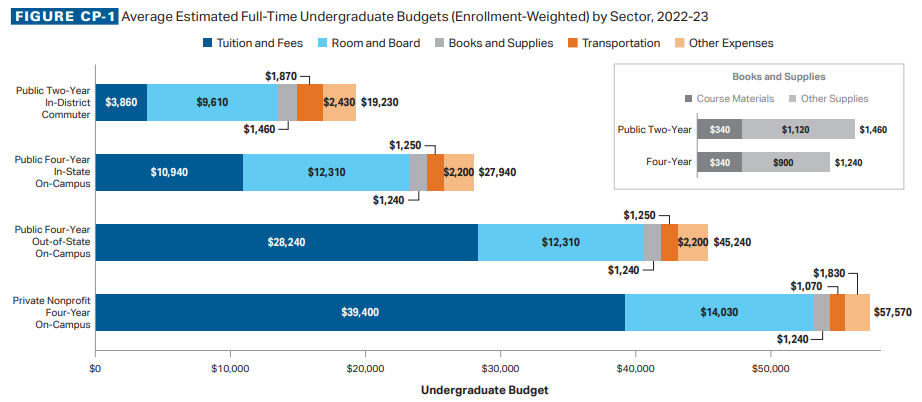College students: Enjoy these student card benefits

The Bankrate promise
At Bankrate we strive to help you make smarter financial decisions. While we adhere to strict , this post may contain references to products from our partners. Here's an explanation for . The content on this page is accurate as of the posting date; however, some of the offers mentioned may have expired. Terms apply to the offers listed on this page. Any opinions, analyses, reviews or recommendations expressed in this article are those of the author’s alone, and have not been reviewed, approved or otherwise endorsed by any card issuer.
Key takeaways
- A student credit card works the same as other credit cards except it's designed with benefits that matter to students and offers student-accessible approval criteria.
- The primary benefits of a student credit card include building credit, learning to use credit responsibly, having a backup payment option for emergencies, secure payments and earning rewards for college students.
- Choosing a student credit card requires you to look beyond the perks. Review the interest rates, fees and terms of the credit card you're considering.
College can come with a whole host of expenses outside of the cost of tuition — from books and rent payments to groceries and gas. Full time students from public two-year universities, public four-year colleges and private four-year universities spent thousands of dollars outside of their base tuition and fees.
Let’s say you’re a full-time undergrad student at an in-state public college. In the 2022-2023 academic year, you would have spent an average of $12,310 for room and board plus another $1,240 for books and supplies, according to a 2022 College Board report. The report further details that you would have spent an average of $1,250 on transportation and $2,200 in other expenses. That adds up to a grand total of $17,000. If you’re attending a private university, those costs are slightly higher.
Source: College Board
Sure — you could pay for these costs with cash or a debit card, but a student credit card allows you to earn rewards for your spending. Student credit cards are normal credit cards, but they’re designed for students who are new to credit. They often have no annual fees, student-centered cardholder benefits and rewards programs, to boot. Importantly, they also have approval criteria that align with students’ typically lower incomes and new-to-credit status.
If used responsibly, student credit cards can help build your credit history. You’ll inevitably need a strong credit history for your future financial goals like buying a car, getting your first apartment or buying a home. So if you know you have to spend a few grand while you’re at college anyway, you might as well benefit from it by earning rewards and building your credit.
If a student credit card sounds like the right move for you, there are a few benefits you’ll want to look for before submitting your application:
- Rewards and how they’re structured
- Credit building opportunities
- Student-specific perks
- Welcome bonuses
We’ve reviewed the best student credit cards out there and the top contestants have these benefits:
Automatic credit line reviews
When you start out with a student credit card, you’re often starting with limited credit or no credit which translates to a lower credit limit if you’re approved. However, most student credit card benefits include automatic account reviews.
That means the card issuer regularly reviews your account to ensure you’ve been making on-time payments and otherwise using the credit card responsibly. If so, the issuer can choose to raise your credit limit. With more available credit, you can lower your utilization ratio and, in turn, improve your credit score.
Lower fees
Student credit card issuers know you’re just beginning to learn the ins and outs of credit, so they tend to give you a break on fees. It’s not unusual for typical credit card fees, such as late fees and annual fees, to be low or non-existent on student credit cards. A common reduction, for instance, is $0 for your first late payment and then the full late fee the next time it happens.
Furthermore, there are multiple student cards that don’t charge foreign transaction fees, so feel free to carry them along for that study abroad semester or epic Spring Break adventure.c
College student reward programs
As a student, your spending likely looks different than that of a more experienced credit card user. That’s why student cards often have rewards programs tailored for college students. Most student cards come with a percentage of rewards on common purchases like streaming services, groceries, gas or restaurants. Usually these rewards are in the form of cash back because what college student couldn’t use some extra cash?
Welcome bonuses
Also known as sign-up bonuses, welcome bonuses on student cards typically come in the form of cash, points or a statement credit once you meet certain spending requirements. Earning a welcome bonus can be an easy way to boost your rewards from the get-go to use toward things like school supplies, dorm essentials or to simply pad your savings.
Secure shopping
Whether you choose to shop online or in stores, there’s always the possibility of scammers grabbing your card information and running up a tab. If your credit card information is compromised and used to make fraudulent purchases, your liability is limited to $50 under federal law. Nearly all credit cards have zero liability protection as long as you report the fraudulent activity within 60 days. The same isn’t true for debit cards and cash.
Credit-building education tools
One of the best things you can do as a student credit card owner is stay on top of your credit profile. The healthy credit habits you develop today can serve you down the road, so anything promoting this goal is a great asset.
For example, Capital One’s suite of student cards have access to CreditWise, a service that helps you monitor your credit profile and protect you from identity fraud — from access to Experian and TransUnion credit report change alerts to dark web scanning and Social Security number tracking.
How to choose a student card
There’s no shortage of student credit cards to choose from, but how do you choose the one that’s right for you? Benefits and rewards are a major motivator, but they aren’t the only factors to consider when choosing your student card. You’ll also want to consider the below:
- Interest rates. Most times the interest rates on student credit cards are higher, as is typical for any card available to people with no or low credit. That means holding a balance from month to month can get expensive.
- Fee structure. Check the rates and fees disclosure for the cards you’re considering. Assuming that you’ll make a mistake while you’re still learning about credit, can you afford the fees listed? Are you planning to travel abroad? Make sure there aren’t foreign transaction fees to pay.
- Rewards structure. How do you prefer to be rewarded for your purchases? Does the reward structure require more strategy and planning than you have time for or is it straightforward? To start you may want to choose a flat-rate rewards structure to keep it simple while you learn the ropes.
- Your personal spending habits. How does your current spending align with the rewards being offered? Look for a credit card that still offers solid rewards without making any changes to your current spending.
Once you’ve done some reflection on what you need from a student credit card, follow these steps to reach a final decision:
- Check your credit score. You might not have one and that’s okay. But knowing where you stand with your credit score will help you determine which credit cards would be a good fit. It’s also a good first step to learning more about credit.
- Get clear on what you want. Make a list of what your ideal student card offers. Should it have no annual fee? Cash back or points rewards? Maybe some subscription reimbursements?
- Review the best student credit cards. We’ve done the research for you and compiled the best student credit cards to make the decision easier for you.
- Narrow it down. Choose two to three cards that appeal to your needs. It might help to do the pros and cons for each.
- Prequalify if possible. Some credit cards offer the option to see how likely approval is without doing a hard credit check. If your top options offer prequalification, use it to further compare the terms you might be approved for.
- Apply for the card. Gather all the personal information you’ll need to complete an application like your Social Security number, income and other personal information. Input the info, make sure it’s correct and hit “Submit.” This will create a hard credit inquiry so try to minimize the number of applications you submit. Sometimes you’ll get a decision back within a few minutes, or it could take several days.
If you’re approved for the credit card, the card will typically take seven to 10 business days to reach you by mail. If you’re denied, you’ll receive a letter detailing why.
The bottom line
Student credit cards come with plenty of benefits and perks that could make your life on campus easier. But those benefits can easily be negated if you don’t use your student card responsibly. Developing healthy credit habits should be your priority over earning as many rewards as possible since interest charges can quickly eat away at any rewards you’ve earned.
Overall, you can use your student credit card to help support your credit-building journey and reach other financial goals. Once you master these concepts with your student credit card, you can apply your good credit management skills to other areas of your financial life.




